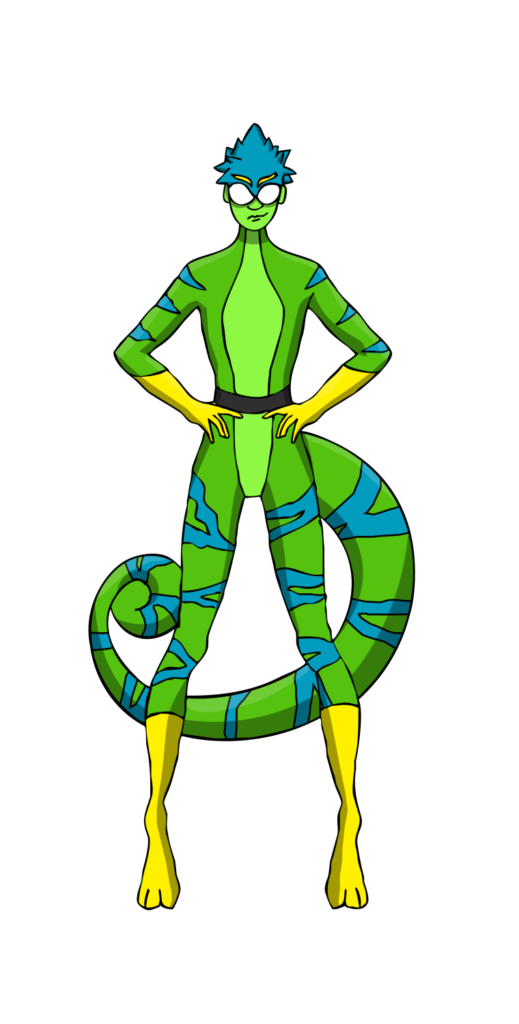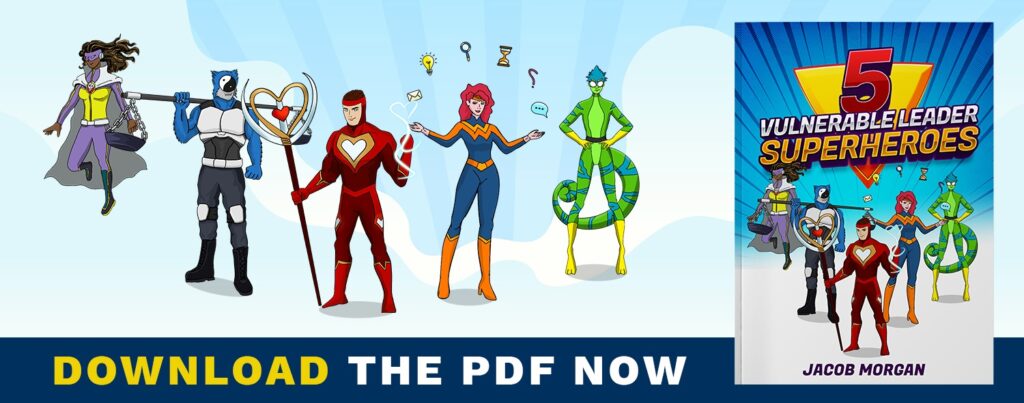In my new book, Leading With Vulnerability, I interviewed over 100 CEOs around the world and surveyed nearly 14,000 employees in partnership with DDI. The goal of the book was to explore the difference between being vulnerable in your personal life versus being vulnerable at work and how current or aspiring leaders specifically should approach vulnerability in the RIGHT WAY. But what does that mean and how do you do that?

Wonder Woman can fly and has super strength and speed. Spider-man can shoot webs from his hands, climb walls, and has amazing reflexes. Wolverine has claws that grow from his hands, can heal himself, and has enhanced senses.
The 5 superheroes are:
- Captain Heart
- Professor Personal
- Super Situational
- Wonder Worker
- Balanced Beast
I consider all 5 of these vulnerable leaders to be superheroes and like any superhero they all have their strengths and weakness. I put together a free PDF which breaks down all 5 of them including their strengths and weakness.
Read through each one of them and let me know which you are most comfortable with being.
Meet Super Situational

Super Situational adapts and blends with their environment and surroundings.
They may meet with a member of their team and share that they are going through a tough time at work but then they may meet with a peer shortly after and talk about a big mistake they made on a client project. Super Situational has very high levels of self-awareness and are good at knowing how they impact a person or a situation depending on what they are sharing. They are also capable of adapting to any situation and have a unique ability of being able to read any room they are a part of.
Super Situational can struggle with energy levels due to constant shifting and changing from situation to situation.
While this can be an effective leadership style it’s also draining. Team members may also be a bit confused as they all get glimpses of different sides of the same vulnerable leader.
Abilities:
- Adapts to any environment or situation.
- Strong sense of self-awareness.
- Can maintain diverse relationships.
- Great at achieving goals and driving results
Weaknesses:
- Can drain energy faster as a result of constant shifting, surveying, and scanning.
- May create confusion as different people see different sides.
- Can be viewed as not authentic
Paul Markovich is the CEO of Blue Shield California with over 7,000 employees told me,
“I’m a situational vulnerable leader. Great leaders do what is needed for their people and the organization and what is needed is dynamic, it changes and shifts. There may be times when you’re in an existential crisis as a company and you’re looking at a potential turnaround. The way you need to lead and how you’re going to be a vulnerable leader in that circumstance can be very different than when you’ve got a very healthy company you’re leading. When George Floyd happened, if I showed up to work talking about financial performance instead of saying ‘Oh my god, I just witnessed a man being callously murdered in the street, and it has deeply affected me and made me also think very deeply about racism in this country, and what we can do to address it,’ then my team would look at me and wonder what’s going on with me. Similarly, if I show up to work one day talking about diversity and inclusion or how I’m feeling while my business is a quarter away from insolvency, my team would look at me in that same way. It’s not that these aren’t important issues but people will be out of jobs if I can’t turn things around. Leaders need to demonstrate competence here and have a plan. In terms of being an effective leader, it means knowing when and how to be vulnerable. It can help you be a more effective leader.”
Download the PDF to learn about all of the 5 Vulnerable Leader Superheroes.

Comments